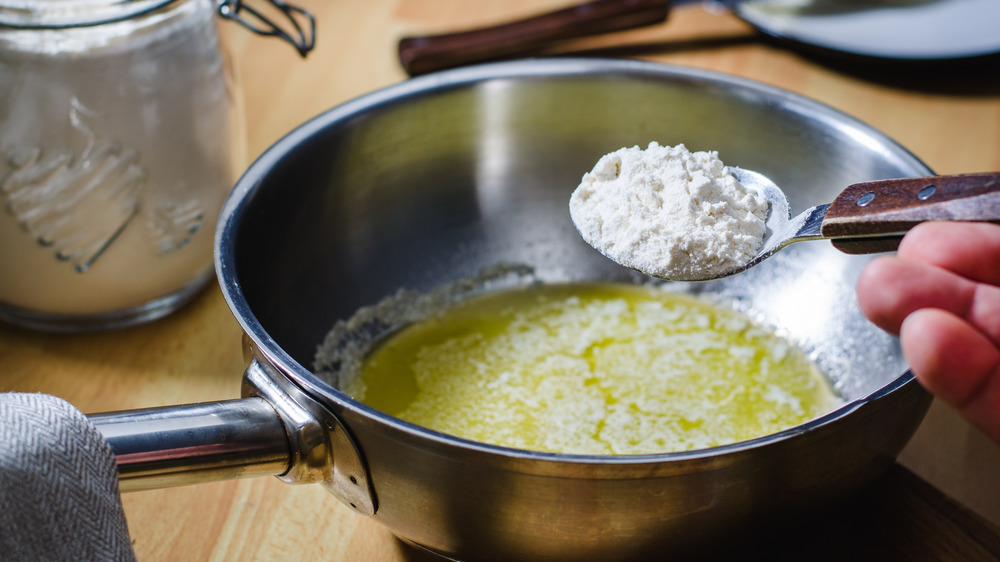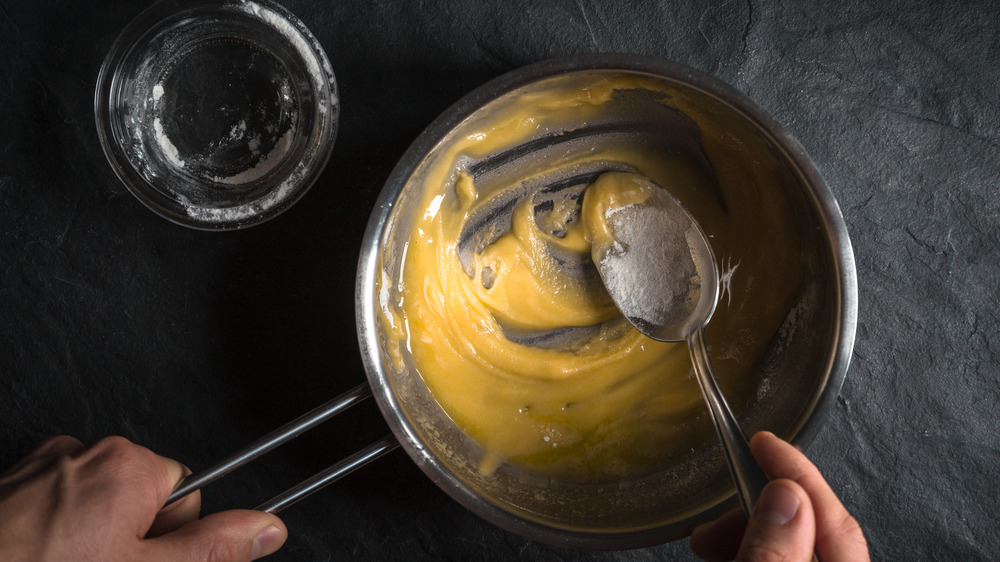The No-Stir Roux Method You Need To Know
For many cooks, mastering roux is truly a fundamental building block in learning the ins and outs of cooking. It is the basis of an incredible amount of classic recipes — such as gumbo, gravy, and macaroni & cheese — and it is immensely important to be mindful of how to cook with it.
It's generally understood that roux is an equal combination of a fat and a flour that is most commonly built at the start of a recipe and provides body, flavor, and a thickening agent for the final dish, as noted by Epicurious. The two primary reasons to use roux, Serious Eats explains, are to cook out the raw flavor of flour and to ensure that the flour doesn't clump in the sauce. Roux is a delicate balance though, and in some instances, you may want it to take on a deep brown color which is why it's so important to "babysit" your roux as it cooks and not go too far away from the stove.
However, did you know that not all roux has to be cooked on the stovetop? If you're tired of stirring roux over a low heat for an inordinate amount of time — fret not — the oven is an option! America's Test Kitchen states that cooking your roux in the oven is not only an option, it may actually be preferable for certain dishes, such as gumbo.
How do you make roux in the oven?
America's Test Kitchen notes that the desired flavor of a roux is reached when "flour is heated to the point where its starch breaks down and undergoes the Maillard reaction, forming dark brown pigments and flavorful compounds." The oven technique is called a dry roux and calls for nothing more than a skillet and flour. Preheat the oven to around 400 degrees, be sure to stir the flour occasionally as it browns, and remove it from the oven once the flour reaches the desired color. Stir some room-temperature water or broth into the toasted flour and stir into the sauce, soup, or stew that is awaiting thickening. Voilà — that's it!
Typically, roux is nothing more than a mix of butter and flour, but this method actually eliminates the fat component altogether. Some general tips: While butter is most commonly used in most roux, it is important to use a neutral oil if you're planning on cooking a dark roux, because the smoke point is higher and will prevent burning that may occur with just butter, according to Taste of Home. The lighter the color of the roux, the more thickening it will contribute, but the darker the color, the more flavor the finished dish will have. Lastly, Taste of Home also notes that it's important to use a whisk or spatula when making your roux.
Roux can be a bit tricky, but once you get the hang of it, you'll be amazed at the dishes you're able to easily whip up!

